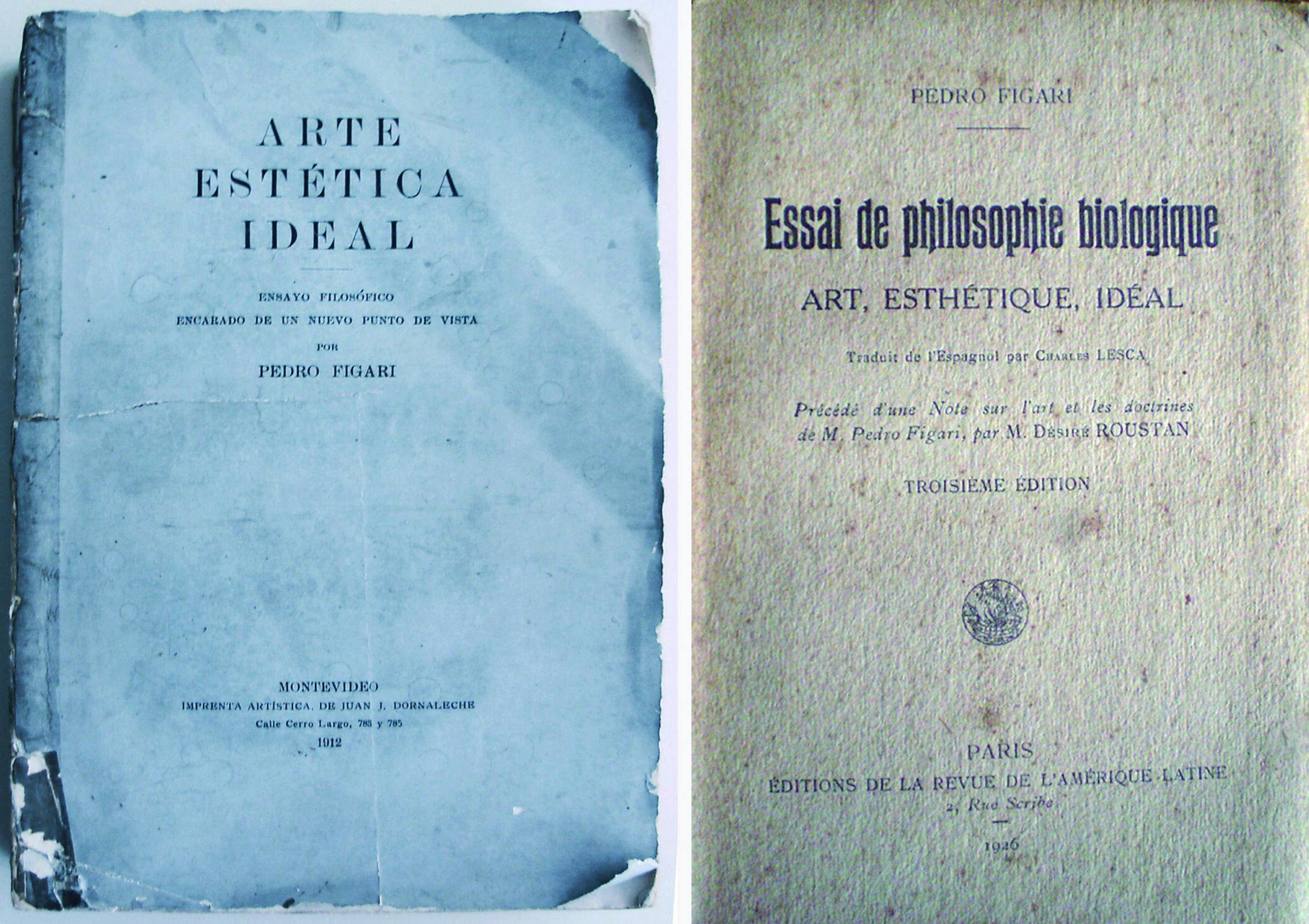
Fig. 1. Left: Pedro Figari’s Arte, estética, ideal (Montevideo: Imprenta Juan Dornaleche, 1912), first edition. Right: Pedro Figari’s Essai de philosophie biologique. Art, esthétique,idéal, third edition. Translated by Charles Lesca, with prologue by Désiré Roustan (Paris, Éditions de la Revue de L’Amérique Latine, 1926)
Figari as a thinker is less known. Especially his pedagogical thought, which was based on the principles of the “active school.”
From the Desk of. . . invites scholars to fill gaps in English-language reference materials on Latin American art by developing research on movements, geographies, and methodologies.
Pedro Figari Solari (b. Montevideo, 1861–1938), known mainly as a painter, was also a multifaceted intellectual of the so-called “Generación del Novecientos,” which included the writer José Enrique Rodó (b. Montevideo, 1871–1958), philosopher Carlos Vaz Ferreira (b. Montevideo, 1872–1958), and politician and president of Uruguay, José Batlle y Ordóñez (b. Montevideo, 1856–1929).
Figari received a law degree in 1886 and a few years later he rose to prominence for his public performance as a criminal attoreney in the defense of someone who had been accused of political murder, and whose innocence was later proven. His relentless argumentative logic was heard in the public hearings of this trial and would become famous with the publication of El crimen de la calle Chaná: Un error judicial, in 1899. In 1903, he published La pena de muerte, a well-founded plea for the abolition of the death penalty, which occurred four years later in Uruguay. He was close to President Batlle y Ordoñez and held seats in the National Parliament. Less well-known is Figari’s facet as a thinker. Especially his pedagogical thought, which was based on the principles of the “active school,” and was put into practice between 1915 and 1917, when Figari was director of the Escuela Nacional de Artes y Oficios (ENAO). But also his philosophical thought—inseparable from his pedagogy—of positivist origin and anthropological projection, thoroughly revealed in his book Arte, estética, ideal, published in Montevideo in 1912. As philosophy historian Arturo Ardao has pointed out, this book also includes “a theory of knowledge, a metaphysics, a philosophy of religion, a moral philosophy, and a philosophical anthropology.” 1 The book’s first French edition was published in 1920, with a preface by philosopher Henri Delacroix, and its second was published in 1926, under the title Essai de philosophie biologique, this time with a prologue by Désiré Roustan, a student of Henri Bergson (Fig. 1). It is a thick, six hundred–page tome where, among other things, Figari detaches the concept of art from the notions of the aesthetic and the ideal with which it was usually accompanied. He proposes instead to understand it purely and exclusively as a manifestation of the “organic intellect in action.” 2 His departure from dominant ideas about art is radical: “What else do the architect, the painter, the musician, the choreographer, the sculptor, the poet do when they work. . . if not contribute their intellect? However, only they are called ‘artists.’ The others, however bright they may be, are not considered citizens of the Republic of Art, which should be called a Monarchy, for there is nothing more aristocratic than the concept of art that predominates at present.” 3
The starting point is the human being as “organic individuality,” impelled to gradually improve this condition. In the preface, Figari states: “From the position in which I have placed myself. . . I see Man as one of the infinite modalities of integral substance and energy—that is, as organic individuality, as a simply morphological value.” 4 Humans, as other living configurations in nature, are “simply morphological values,” which manifests clearly in Figari’s paintings, in some of which the human figure is barely differentiated from other environmental elements.
If art is wit in action, and if wit is the ability to invent, then “industriousness” is human’s willingness to direct ideation towards concrete production.
On the other hand, Figari’s unique anthropological thinking leads him to prefer painting phenotypes in which he finds a coherence between being and doing. That is the case of the Indigenous people (to which he devoted his “primitive men” series), the Black African freed men (in their Río de la Plata version) and the Gaucho. These are all social specimens that resist all kind of transculturation. Figari’s painting does not approach these figures from a racial point of view but as part of a strictly cultural assessment.
This complex philosophical perspective is also crucial for understanding Figari’s pedagogical thinking. For Figari, teaching is capable of inducing self-knowledge in learners, endowing them with their own way of thinking and acting: “School must give them the clearest idea of responsibility and the means to value their own energies.” 5 And elsewhere: “Artistic teaching is not a subject or a series of subjects but a point of view, a judgment applied to working. . . in art.” 6
For these ideas of education, what is essential is the formation of a productive consciousness capable of giving rise to an industrial culture that, starting from the individual scale, could reach a national and even Latin American scale. In Figari’s view, “industrial practical culture” is not only a local but a continental aspiration, since South America has a heterogenous cultural matrix, and its identity is still not defined vis-á-vis the world. Figari finds one of the main referents for the “productive consciousness” in Great Britain’s Arts and Crafts movement. In his writings, he cites John Ruskin and William Morris numerous times. 7
Productive consciousness is measured by “industriousness,” a term that Figari repeatedly uses in his writings to describe a certain potential for manual-intellectual creativity, partly innate and partly acquired through pedagogical action: “Industrial education should not begin (much less in these countries) by learning how to handle the usual industries, but rather by developing the student’s industriousness, which, by preparing their productive consciousness, enables them to intervene judiciously in those same industries and undertake its initiatives. In this way, a competent craftsman is created, someone capable of making decisions under any emergency. Otherwise, an automaton operator is produced, someone destined for the numerous forms of enslavement inspired by businessmen’s pursuit of profit.” 8
For developing creativity’s potential, the notions of art and industry coincide, constituting terms that are inseparable in pedagogical doctrine: “It is often understood that art and industry are different domains. . . However, to understand how absurd this notion is, it is enough to observe that if the industrial effort were deprived of its generating element, it would remain lifeless, confined to repetition.” 9 Figari also draws a radical distinction between what he means by idealization—which is always evocative, contemplative, ancient—and what he calls ideation, which is projective, “wit in action,” and responds to modern rationality.
If art is wit in action, and if wit is the ability to invent, then “industriousness” is human’s willingness to direct ideation towards concrete production. But for this process of individual ideation to materialize in a concrete product, the person must have previously formed their own criteria. Thus, for Figari the valorization of the product does not lie in aesthetic innovation but in the relevance of the concepts and criteria applied in its production.
Among the twenty workshops created by Figari, three are especially relevant: furniture (carpentry), metal crafts, and ceramics.

Fig. 2. Scenes of the school workshops at the Escuela Nacional de Artes y Oficios, 1915–16. In the image on the left you can see Pedro Figari and his son, Juan Carlos Figari Castro

Fig. 3. Dining sets with their corresponding ornamental objects, including textiles, 1916–17. Exhibited at Escuela Nacional de Artes y Oficios, February–March, 1917
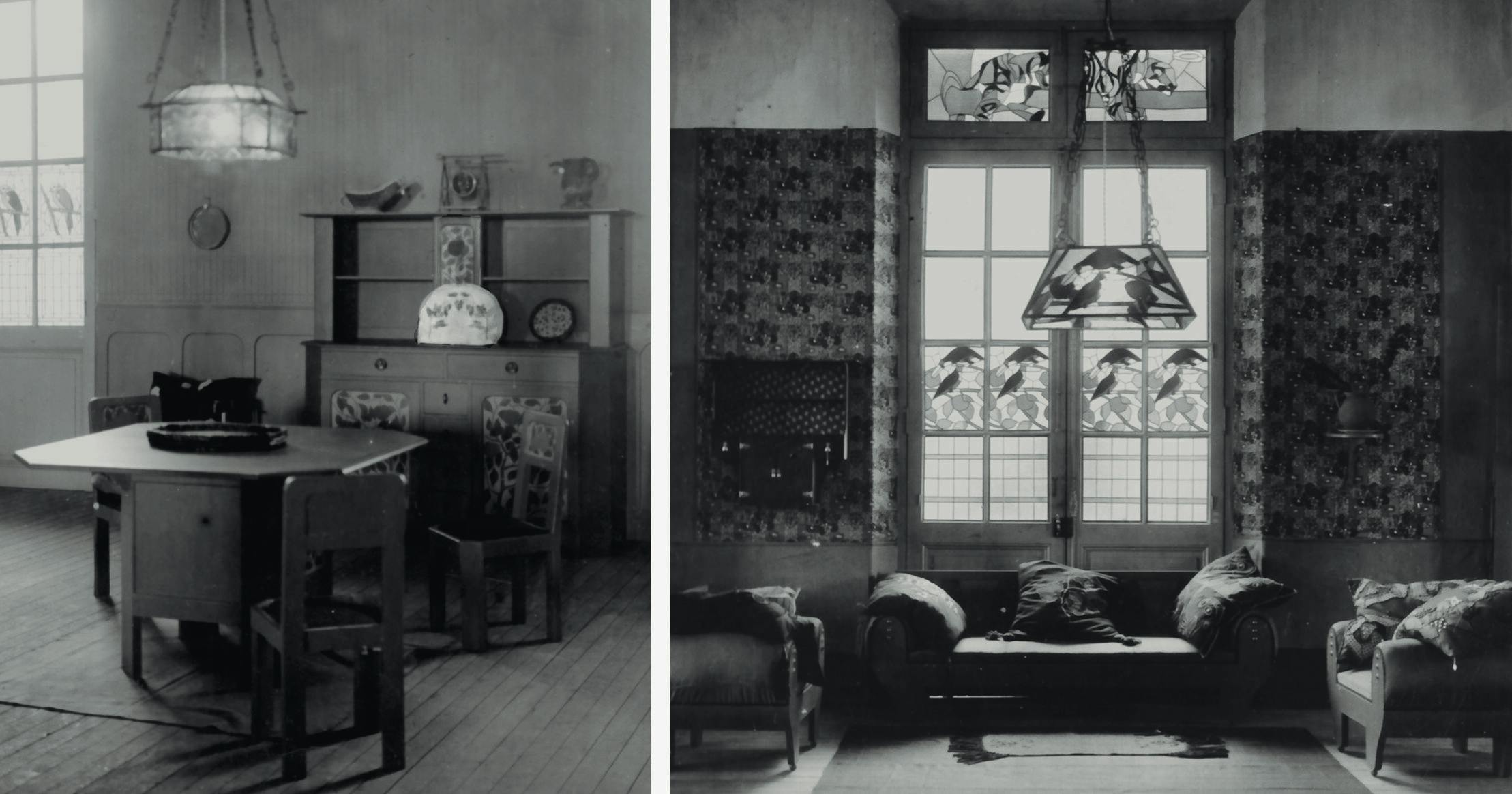
Fig. 4. Dining and living room sets, including stained glass windows and wallpaper designs, 1916–17. Exhibited at Escuela Nacional de Artes y Oficios, February–March, 1917
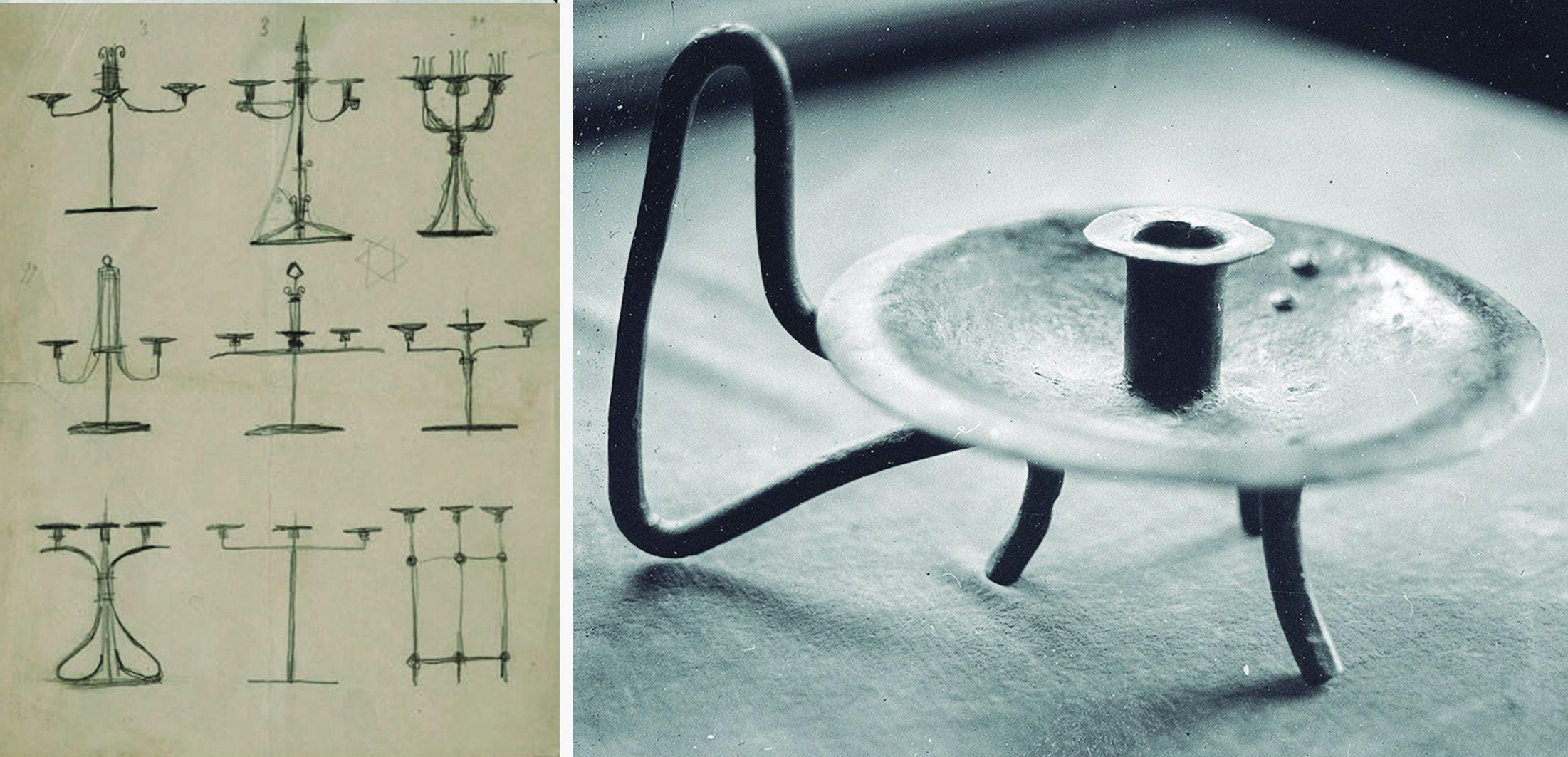
Fig. 5. Candlestick drawings (left) and object made in the blacksmith workshop (right) of the Escuela Nacional de Artes y Oficios. Note the emphasis on formal expression and constructive rusticity
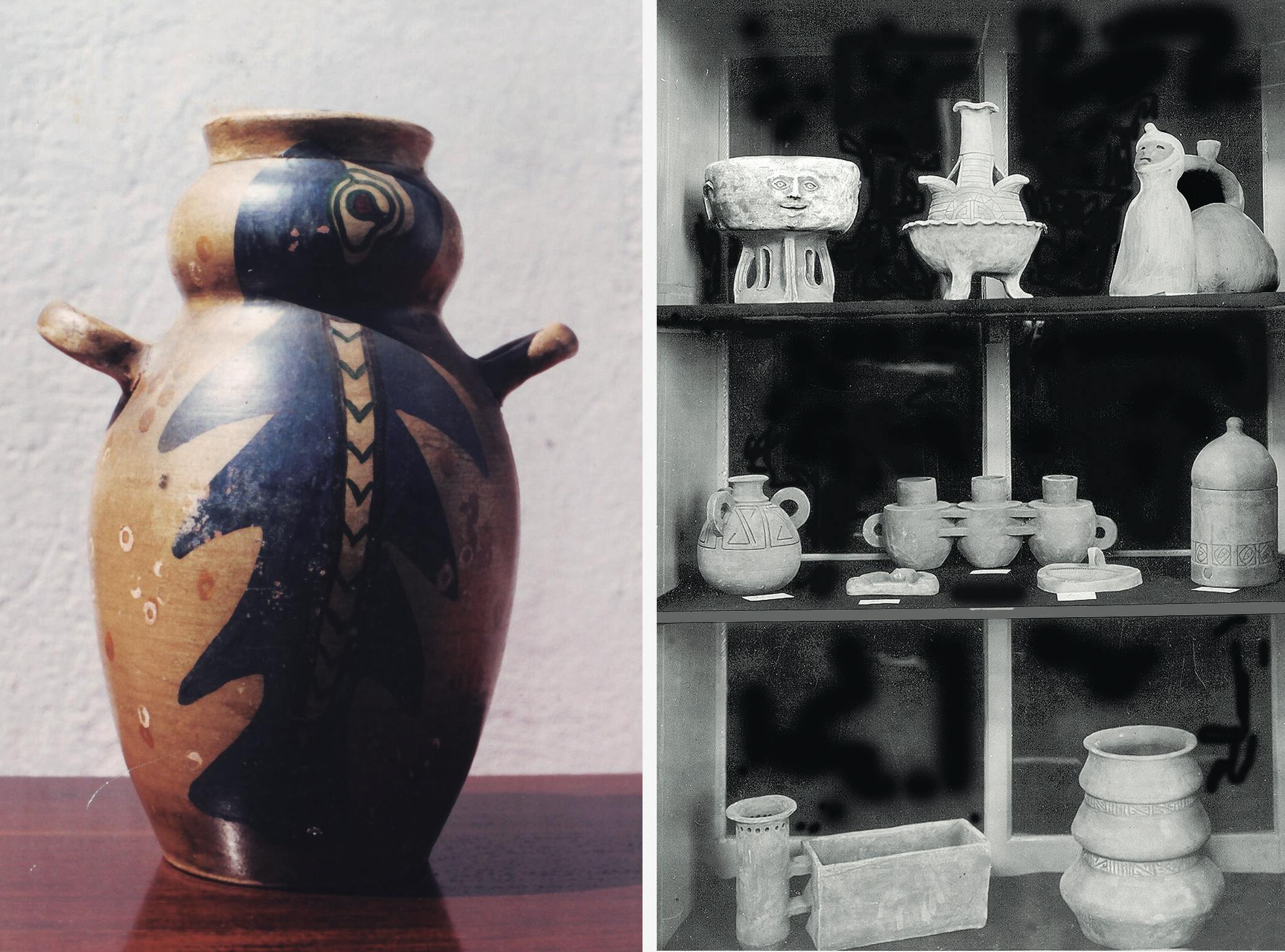
Fig. 6. Objects made in the ceramics workshop of the Escuela Nacional de Artes y Oficios (1915–16). Right: vitrine exhibiting objects still not painted, shown at the Escuela Nacional de Artes y Oficios between February and March, 1917. Left: polychrome ceramic piece (15 in. high), made by student Luis Mazzey
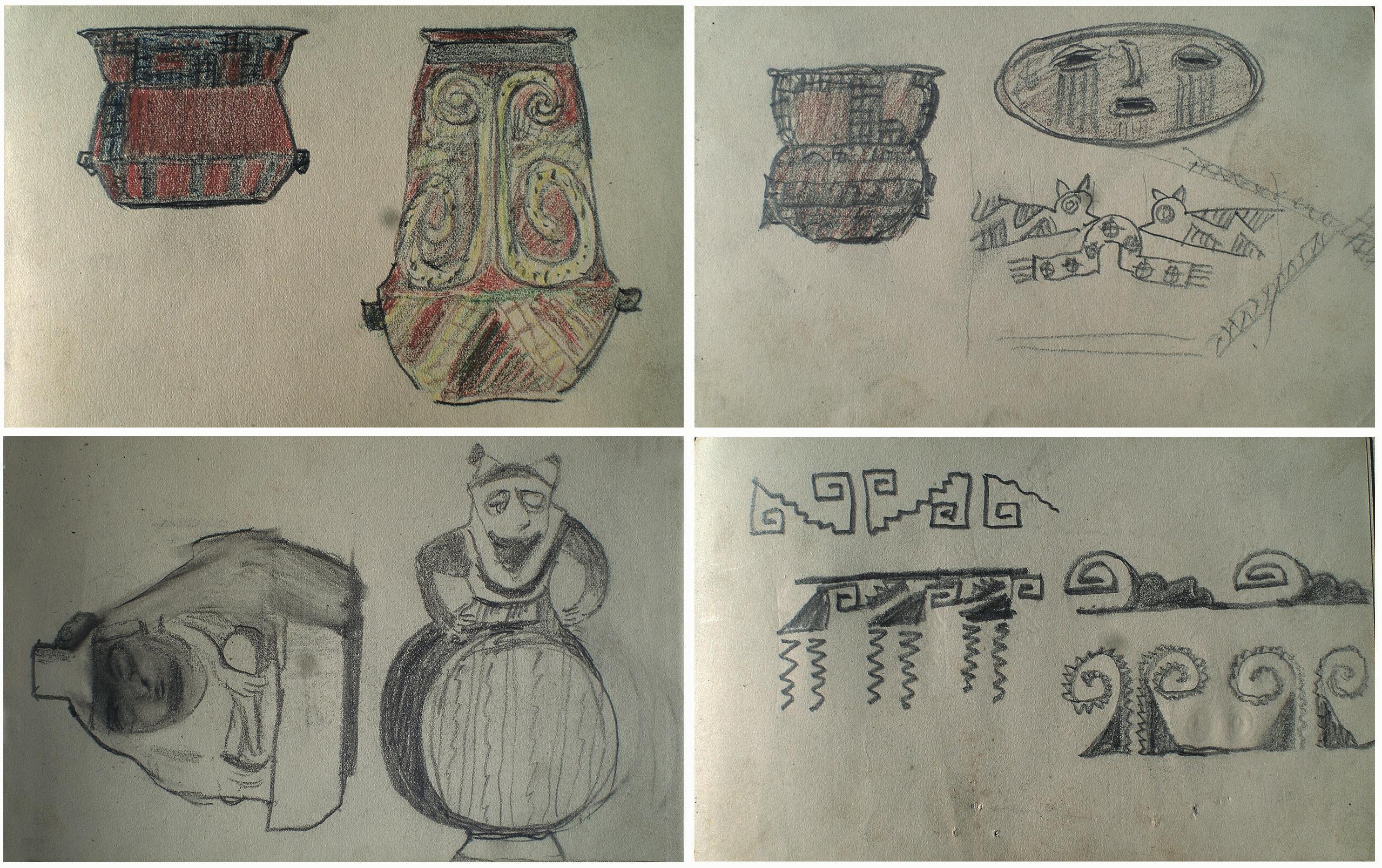
Fig. 7. Graphic notes taken by the artist during his trip to Argentina, April 1916. Graphite and colored pencil on paper, 4 ¾ × 7 11/16 in. (12 × 19.5 cm)
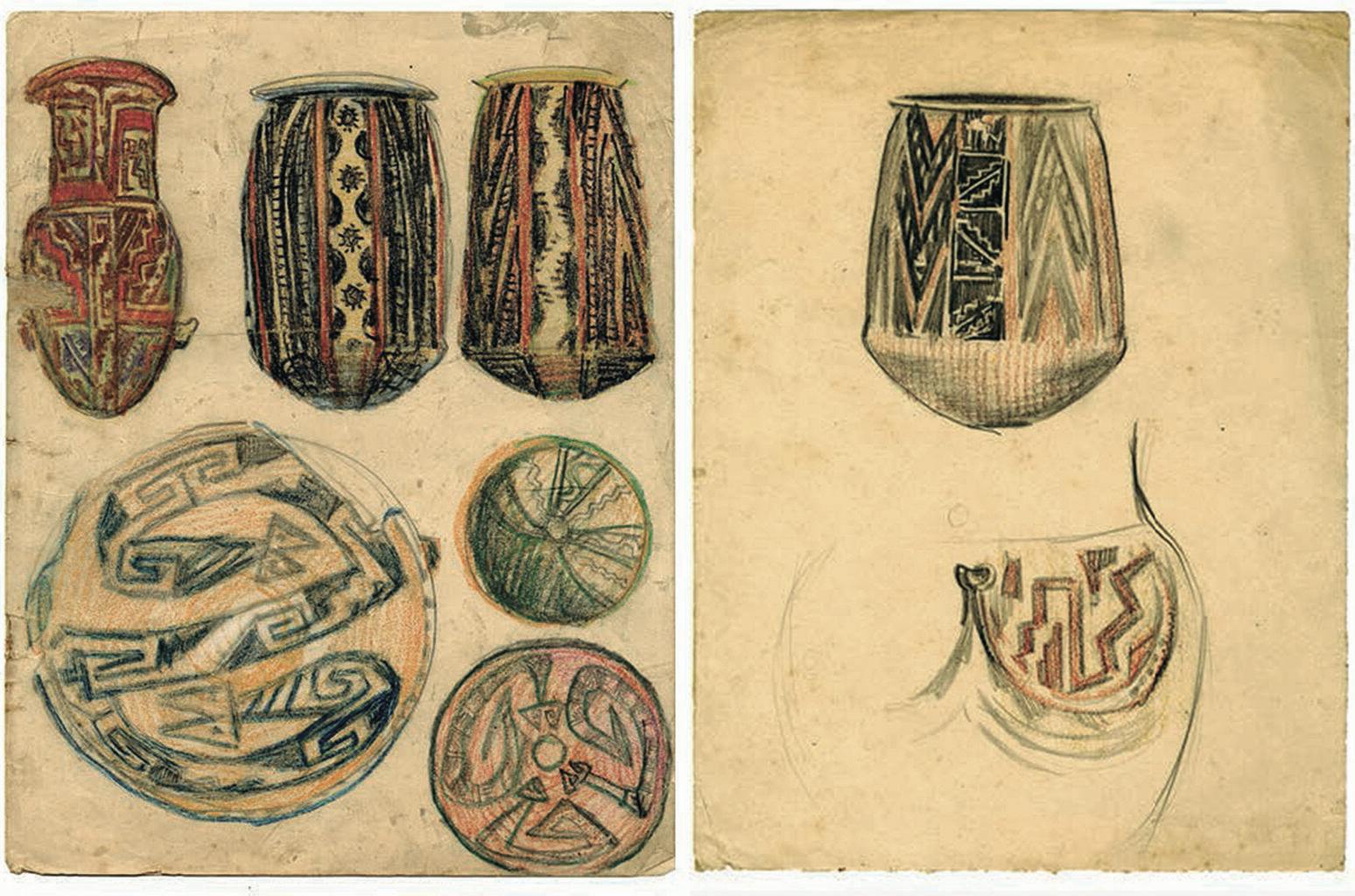
Fig. 8. Graphic notes taken by Juan Carlos Figari of pre–Hispanic pottery in Argentina, April 1916. Graphite and colored pencil on paper, 12 5/8 × 9 5/8 in. (32 × 24.5 cm)
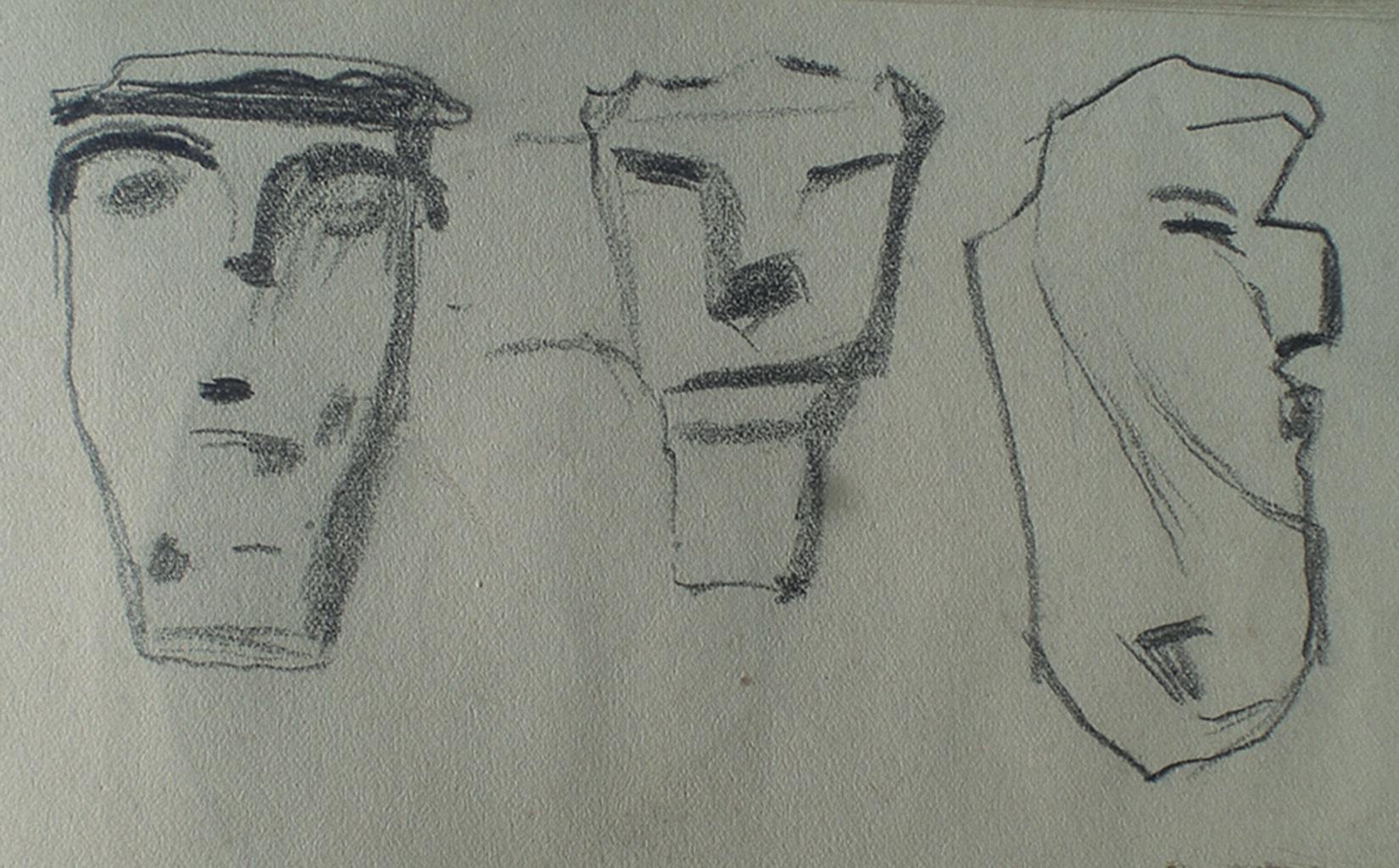
Fig. 9. Drawings from Pedro Figari’s notebook made during his trip to Argentina, April 1916. Graphite and colored pencil on paper, 4 ¾ × 7 11/16 in. (12 × 19.5 cm)
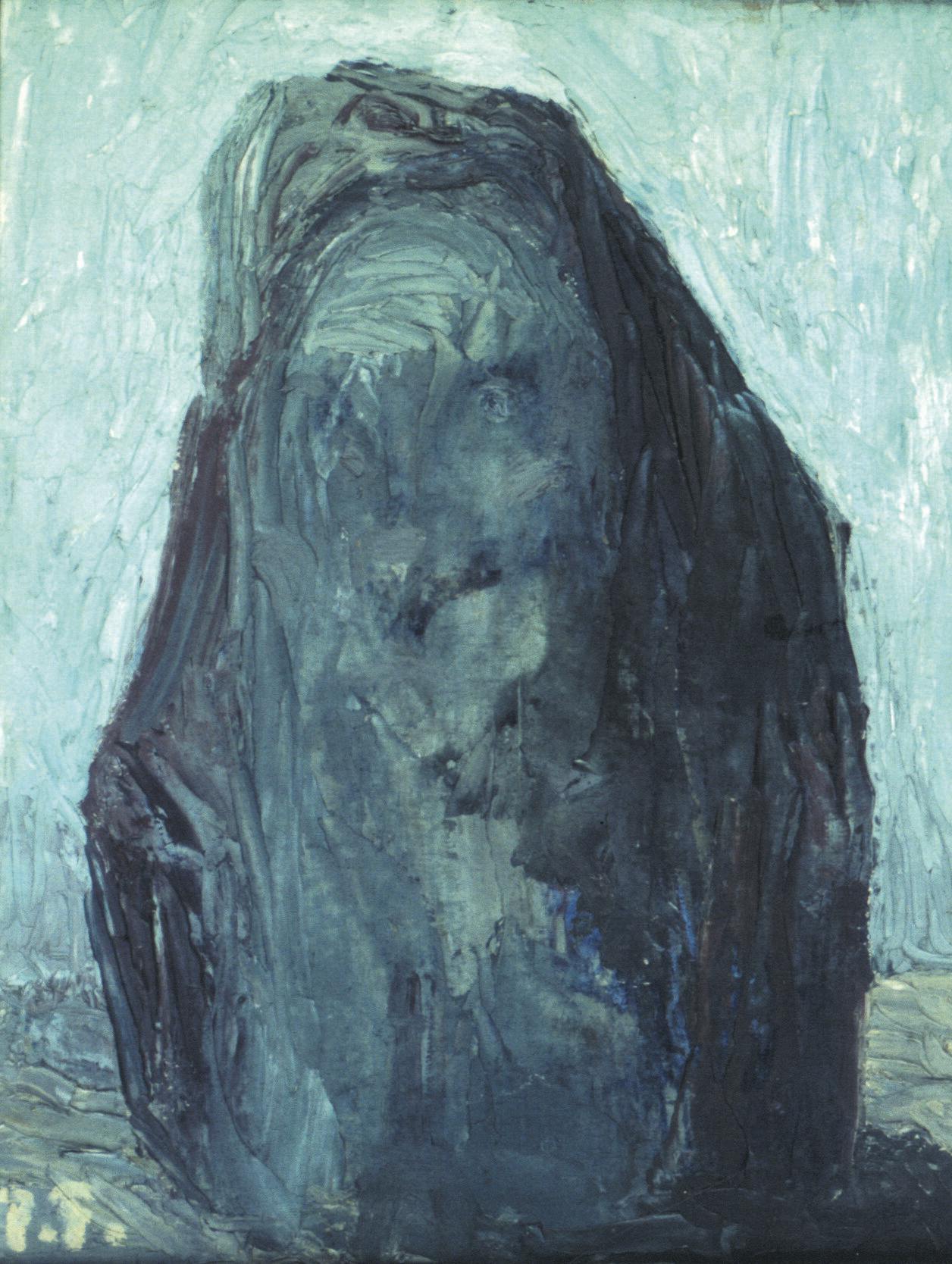
Fig. 10. Pedro Figari, Estolidez (Stolidness), ca. 1919. Oil on cardboard, 15 ¾ × 11 13/16 in. (40 × 30 cm)
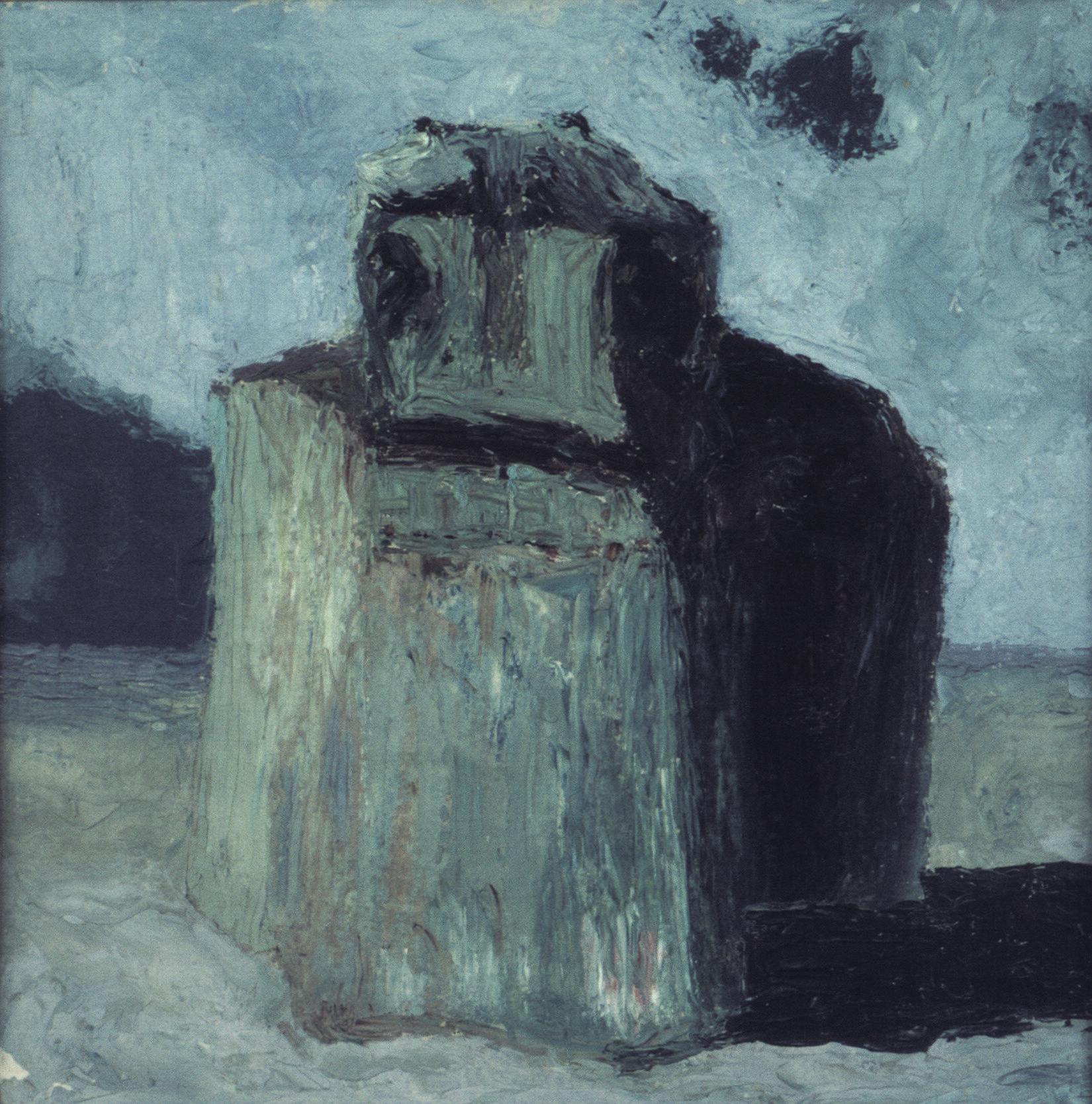
Fig. 11. Pedro Figari, Lujuria (Lust), ca. 1919. Oil on cardboard, 15 ¾ × 15 ¾ in. (40 × 40 cm)
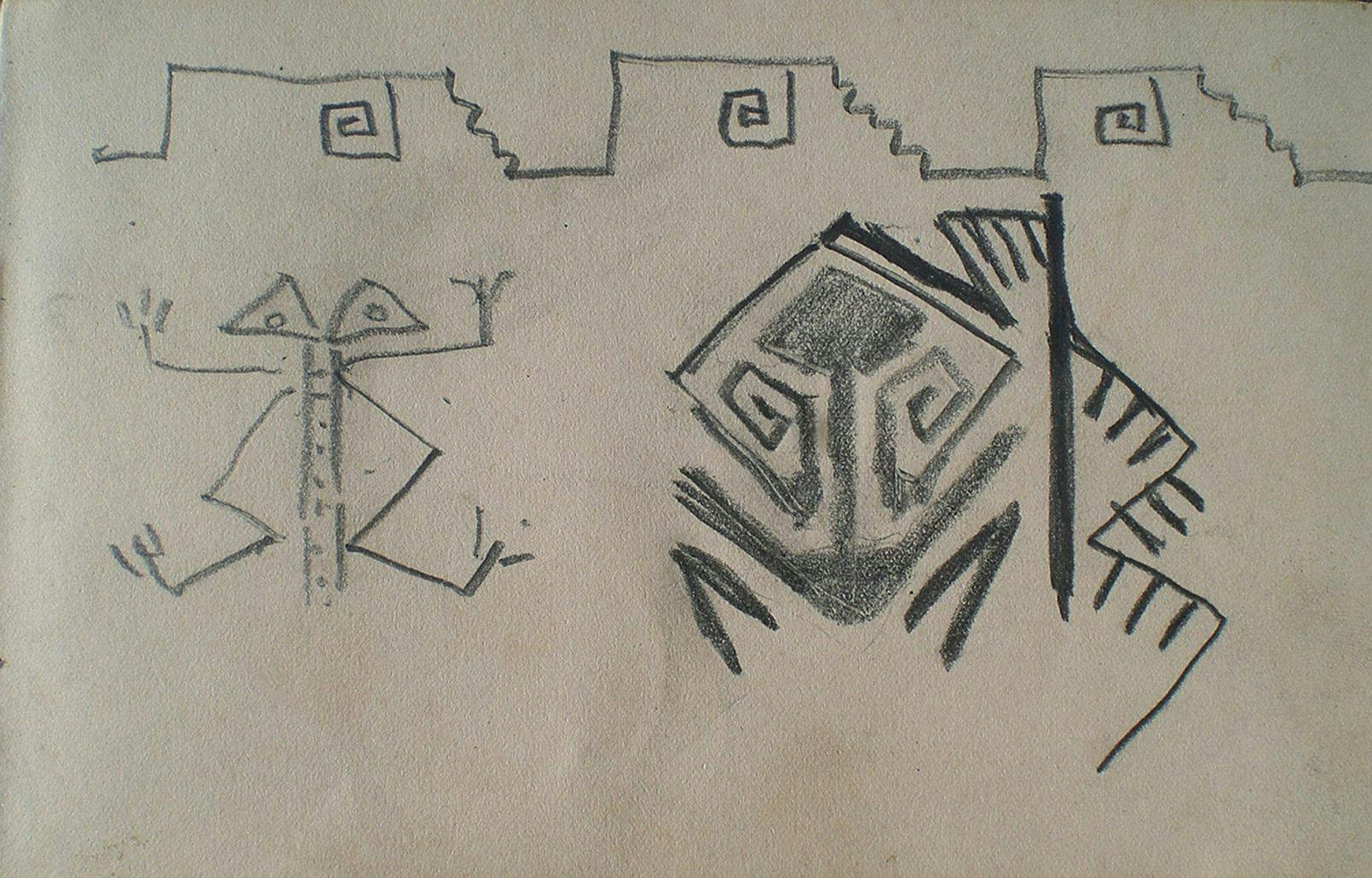
Fig. 12. Drawing of a frog, taken from Diaguita rituals. Artist’s notebook from his trip to Argentina, April 1916. Graphite on paper, 4 ¾ × 7 11/16 in. (12 × 19.5 cm)
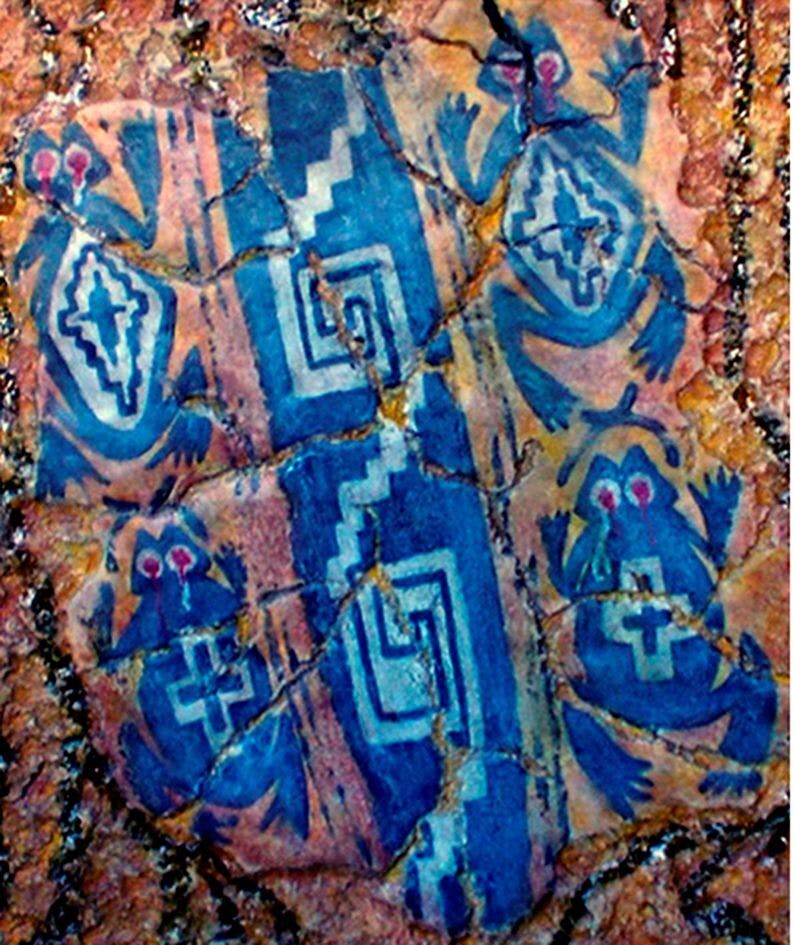
Fig. 13. Rock painting from northern Argentina featuring the frog motif
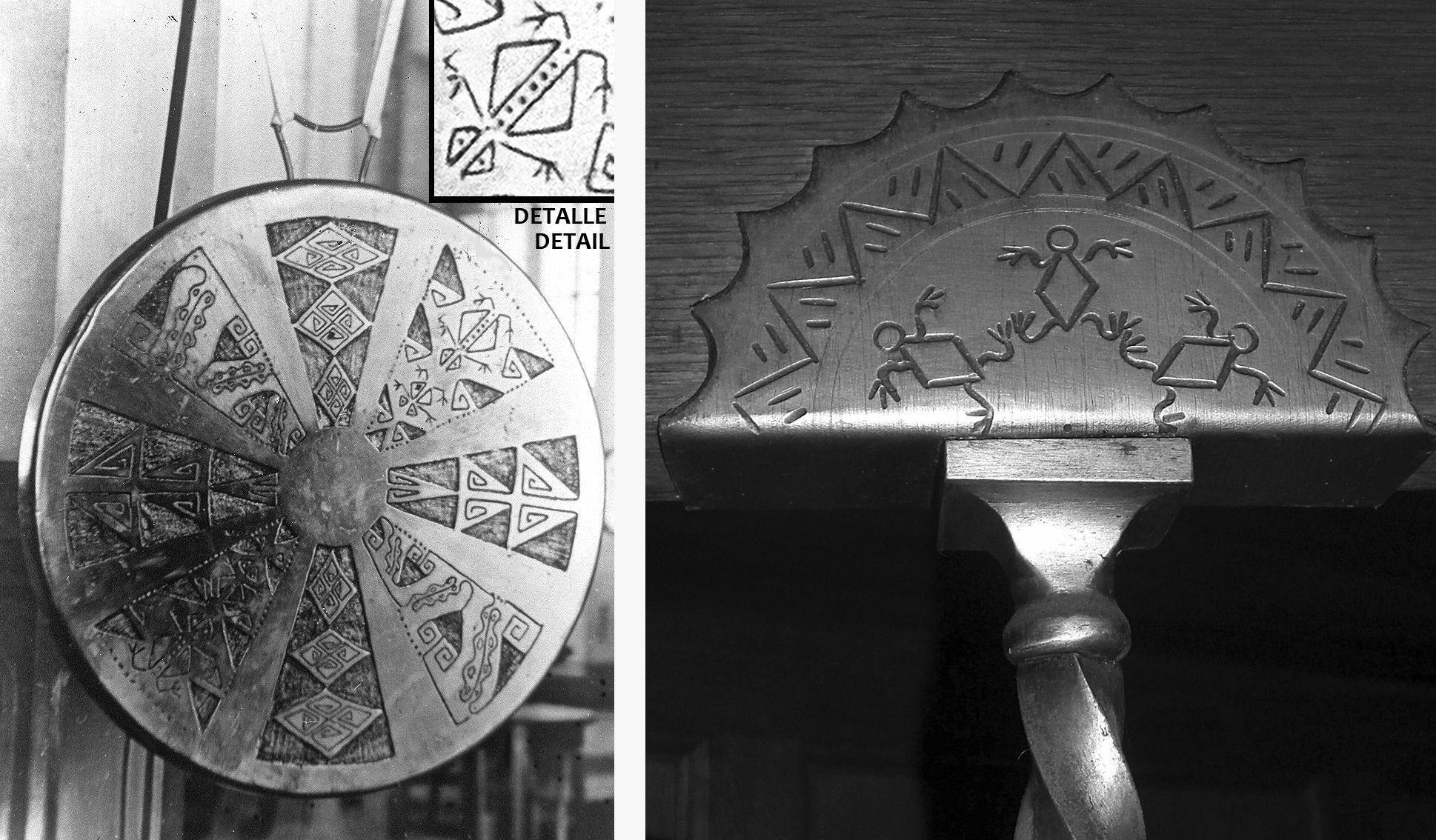
Fig. 14. Escuela Nacional de Artes y Oficios (1916). Metal pieces with incised frog drawings
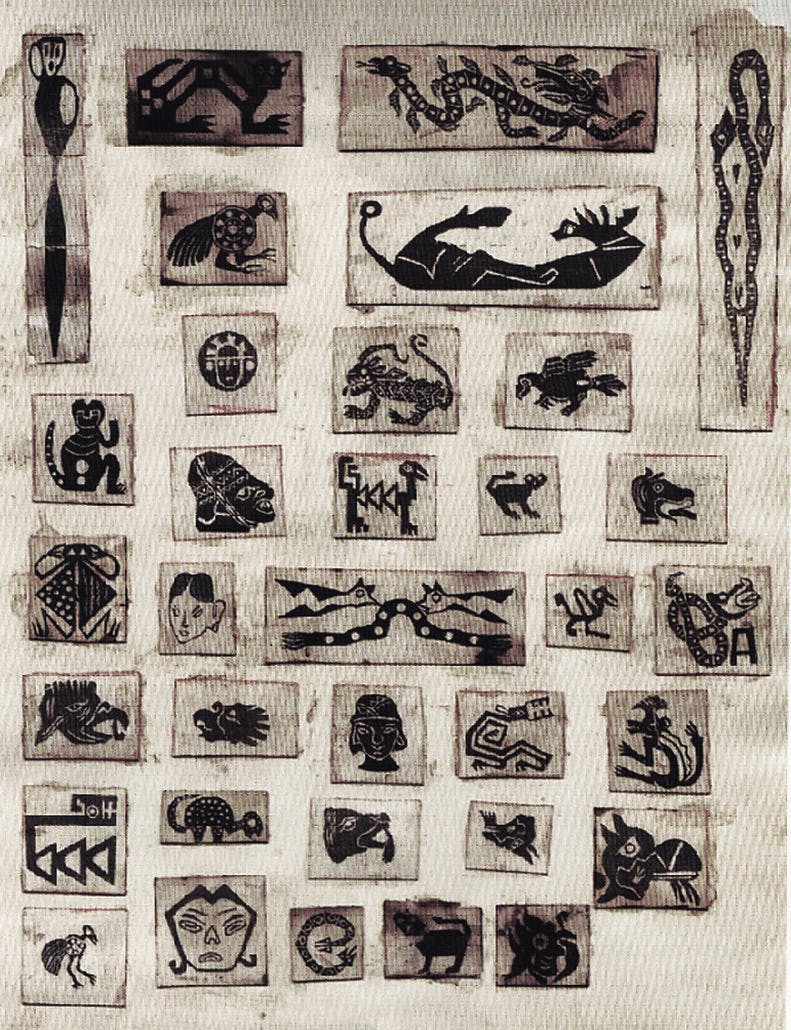
Fig. 15. Luis Mazzey, Signos mitomórficos diaguitas (Mythomorphic Diaguita Signs), ca. 1916. Woodcut
I.
On June 16, 1900, as a Colorado Party legislator, Figari presented a bill for the creation of a School of Fine Arts that would not be restricted to teaching painting and sculpture but open also to “applied arts.” The goal was to foster a new social figure: the “artisan-artist.” Until then, in Montevideo the teaching of the arts was divided between the School of Mathematics, which trained engineers and architects, and the ENAO, a boarding school that focused on routine crafts. Figari’s project sought to fill the gap between the two and foster a new artistic culture, one without rigid borders between crafts and liberal arts. In the report he presented to the Chamber of Representatives in 1903, he stated: “In addition to architecture, painting, and sculpture, we need the applied arts to emerge vigorously, which would promote industrial flourishing. . . Applied arts play a crucial role in construction, parks, gardens, ceramics, fabrics, glassware, furniture, blacksmithing, scenography, bookbinding, collotype, zincography, lithography, etc.” 10
The project was never approved, which is consistent with the exclusivity enjoyed at the time by liberal arts (painting and sculpture) as bearers of social distinction in politicians’ imaginations. However, the petty bourgeoisie that was feeding the incipient manufacturing industries was not in a position to reject an artistic-craft education that would prove useful for satisfying new demands. This is, in part, the reason why in 1905 the Industrial Union supported a private initiative to create the Círculo de Fomento de Bellas Artes, whose school included night courses for workers. Although the new institution shared this programmatic aspect with Figari’s bill, it lacked the humanist and emancipatory perspective that he had reserved for “artisan-artists.” 11
During President José Batlle y Ordóñez’s two terms in office (1903–07 and 1911–15), the extension and specialization of educational services in higher education was widely promoted throughout the country, but this did not come to constitute a comprehensive cultural policy. It was Figari who introduced a sociopolitical view of artistic practices in the public debate at that time. He considered them to be a particularly apt instrument for the development of the new national “productive consciousness.” In 1910, he firmly opposed ENAO’s pedagogical program, which had been put under the direction of a French educator with the purpose of training skilled workers and workshop managers for already established industries. In opposition to this plan, Figari thought that the purpose of education should be the emancipation of the individual and not their subjection to a factory-business system: “the rational purpose of the institution cannot be the training of simple skilled operators, mechanical officers, and workshop managers. . . More rational and more worthy of the State would be to train craftsmen in the true meaning of the term, given its etymology, that is, artist-workers. . ., competent workers with their own criteria, capable of reasoning and intervening efficiently in the national production.” 12
In early 1915, in the outset of Dr. Feliciano Viera’s presidential term, Figari became the interim director of the ENAO. It was an opportunity to apply his pedagogical ideas to the design and production of objects for domestic use based on a manufacturing matrix. Figari radically changed the school in three main ways: 1) The boarding regime was replaced by a daily class attendance policy. All attendees would pay a monthly fee to cover the costs of education. 2) Routine practical exercises based on copying other people’s models were eliminated and replaced by the analysis of natural forms (especially those of native flora and fauna) as a basis for the students’ free creativity. 3) The collective workshop was enthroned as the predominant place for the socialization of experience and as the center for an active school.
The latter point is crucial since, in Uruguay, this was the first approximation to the pedagogy of the “comprehensive classroom,” a concept that would reach its more thorough formulation in the 1950s. Figari, viewing the workshop as a pedagogical laboratory, departed from the traditional model of individual desks facing a blackboard and instead presented a model in which students worked at large shared tables, organizing meetings and coordinating group work between different workshops, thus fostering interpersonal relationships (Fig. 2). This active connection between various technical disciplines required changes to the architecture of the old building, which were carried out by his son, Juan Carlos Figari Castro. Juan Carlos had received a degree in architecture in 1915 and since then had devoted himself to supporting his father’s work.
All this entailed a substantial change in the institution’s educational policy, which Figari rushed to see through—since his position was temporary, he had to demonstrate the effectiveness of his pedagogical method in a short period of time. “As soon as I suspended the method of practical exercises, radically and in one swift move, it seemed that the institution would collapse. Everyone thought that the previous regime was unchangeable. The method was as comfortable for the authorities and teachers as it was sterile from a pedagogical perspective. However, after the first moments of stupor, the purpose of projecting emerged among the students. Since then they have been seized by a burning passion for thought and creation.” 13
Among the twenty workshops created by Figari, three are especially significant: furniture (carpentry), metal crafts, and ceramics. The first gave a certain style and visual unity to the interior environments designed and produced by the school, since furniture was the natural support for the other craft pieces that had to be coherent with it (Figs. 3–4). The goal was to project and create domestic environments with a sense of totality, an idea that Figari brought from his trip to Paris in 1913, where he was able to see the integral nature of Art Nouveau spaces. This required a certain degree of rationalization in the designs and, therefore, a transversal link of sorts between the different workshops, which would guarantee a critical vision of the whole of what was designed and produced: “The different workshops have all contributed, in one way or another, to all the works. . ., just as the workshops and the students have been associated and are associated, at every step, to carry out works”. 14
As for the metal workshop, there is documentation that suggests a direct intervention by Figari in the general direction of the designs, and the same is true for the ceramics workshop. With regards to the former, the ornately decorated bars, typical of the years between 1910 and 1915, are abandoned in favor of smaller parts such as candlesticks, ashtrays, hinges, latches, and decorative pieces of hammered metal (Fig. 5). The ceramics workshop produced a wide array of glasses, vessels, jugs, and vases of eclectic conception, many of which displayed anthropomorphic and zoomorphic tendencies (Fig. 6).
On June 30 of 1915 (a month before Figari took over as director of the school), the newspaper El Día stated: “One of the purposes of the program is to copy the most widespread models in the manufacture of art objects.” However, one of the goals of the changes introduced by Figari was precisely to eradicate the teaching of copying models and instead foster the creation of a unique identity, based on rational methods and on local/regional resources, both formal and material. This led Figari to acquire the wood for the furniture workshop from Paraguay, and agate stones from northern Uruguay, either for its direct carving or to include it in blacksmithing and carpentry pieces. Figari’s marked interest in the use of elements from the region was in tune with Americanist ideas that were emerging at the time, but it did not imply falling into a naïve regionalism: “When talking about autochthonous art, it is clear that such a thing does not refer to an exclusively national or regional culture (much less nowadays). It rather entails studying the environment. . . assimilating what is already known and making conscious selections, that is to say, assessing the environment with autonomous criteria.” 15
These ideas led Figari to a key moment for his design pedagogy: his trip to Argentina alongside a group of faculty members and students. In October 1916, the group visited the ethnographic section of the Museo de Ciencias Naturales de La Plata and then the Museo Etnográfico de Buenos Aires. The latter had been founded in 1905 by the archaeologist Juan Bautista Ambrosetti, with whom Figari established a friendship from then on. The main document preserved from that trip is a notebook with drawings made by Pedro Figari and his son Juan Carlos. The drawings were mostly graphic studies of the forms contained in the ceramics produced by Indigenous people of the Diaguita and Santamariana cultures of northern Argentina (Figs. 7–8). These drawings show Figari’s interest in the anthropomorphic motifs predominant in these ceramics, which was related to the pantheistic and animistic ingredient of his philosophical thought, according to which everything is alive and animated by energy, even in the mineral world. The series of paintings he made around 1919, under the rather general title Piedras (Stones), owes a great deal to the Diaguita and Santamariano designs with which Figari came into contact on that trip to Argentina. This anthropological evidence was the confirmation of what was already a central aspect of his philosophical edifice. In the series, the painter represents anthropomorphic stones with titles such as Codicia (Avarice) or Estolidez (Stolidness), trying a pictorial language that is close to animism, in a liminal area between the world of living beings and the mineral world (Figs. 9, 10, 11).
The schematic drawing of “La rana,” (Fig. 12) which reappears in several objects produced at the School after the trip to Argentina, is revealing. The motive is taken from a Diaguita ritual (Fig. 13) and is transformed into a sort of “trademark” of ENAO productions (Fig. 14). Luis Mazzey (b. Montevideo, 1895–1983), one of Figari’s most outstanding disciples, made a xylography print of a sheet displaying the main mythomorphic signs of Diaguita culture (Fig. 15).
In a conference given in Buenos Aires 16 , Figari praised the Argentine scholars who took the findings of archaeological excavations as a formal and ornamental resource for the art and architecture of the time. He is likely referring to architects Héctor Greslebin, Ángel Guido, and Martín Noel, who were seeking a “national style” through a synthesis of European and Indo-American elements, influenced by the ideas that the writer Ricardo Rojas summarized in his 1922 book Eurindia. 17
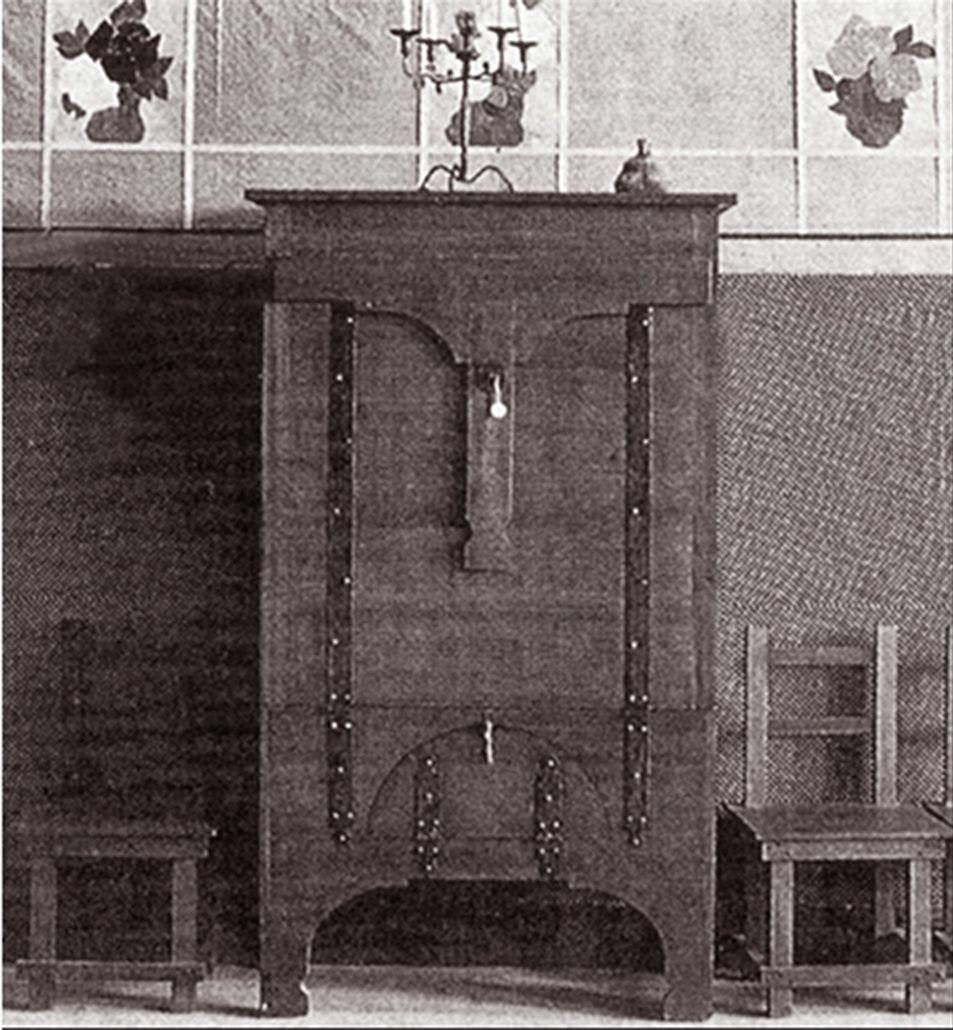
Fig. 16. Cupboard and chairs made in the carpentry and furniture workshop of the Escuela Nacional de Artes y Oficios. Exhibited at the Escuela Nacional de Artes y Oficios between February and March, 1917
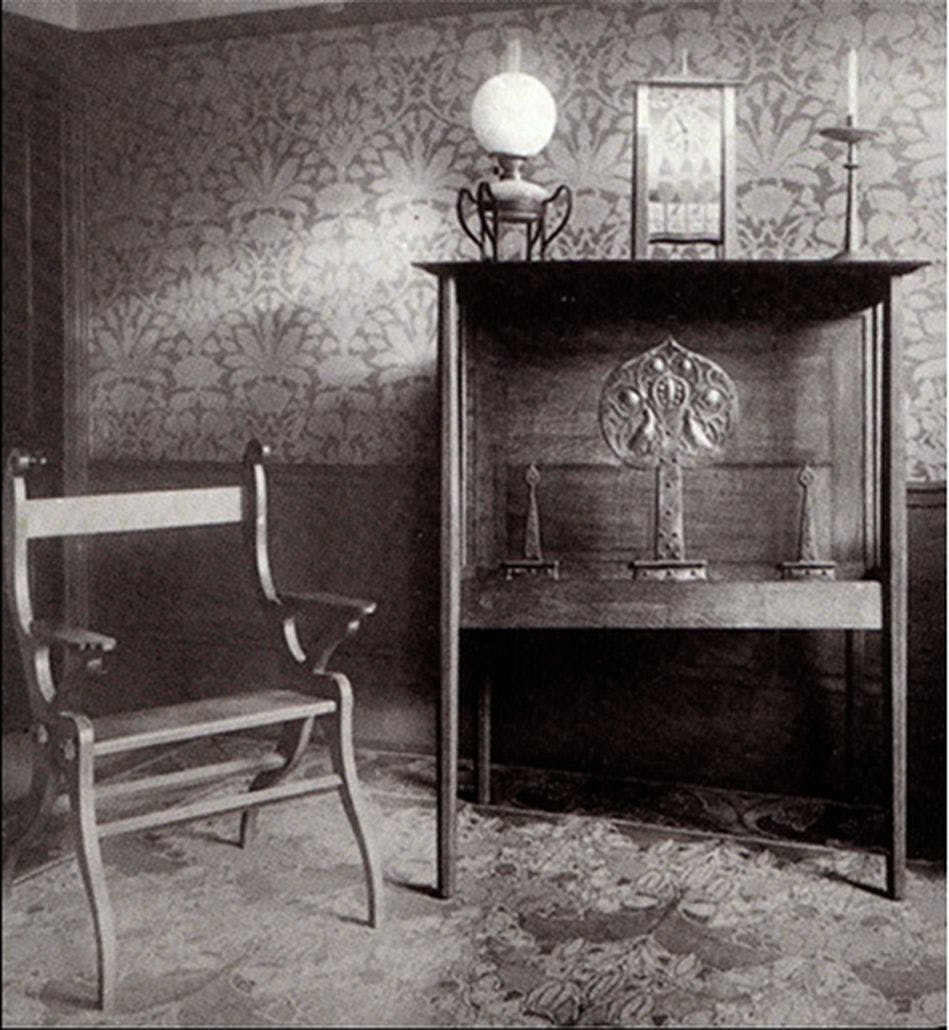
Fig. 17. William Morris, Arts and Crafts furniture and ornaments, ca. 1880
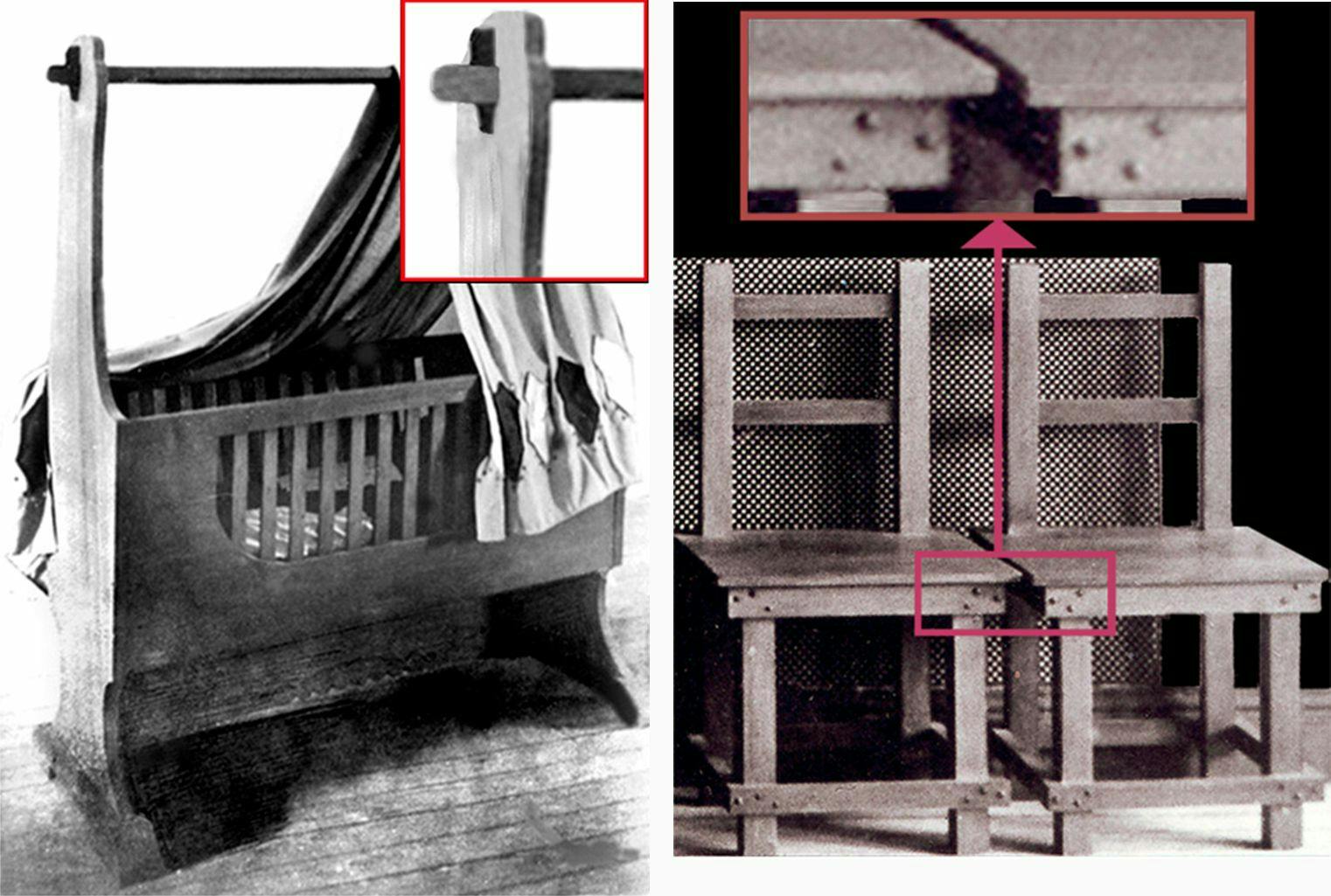
Fig. 18. Crib and chairs made in the Escuela Nacional de Artes y Oficios, 1916. Exhibited at the Escuela Nacional de Artes y Oficios between February and March, 1917. The images show that assembly elements were deliberately left visible
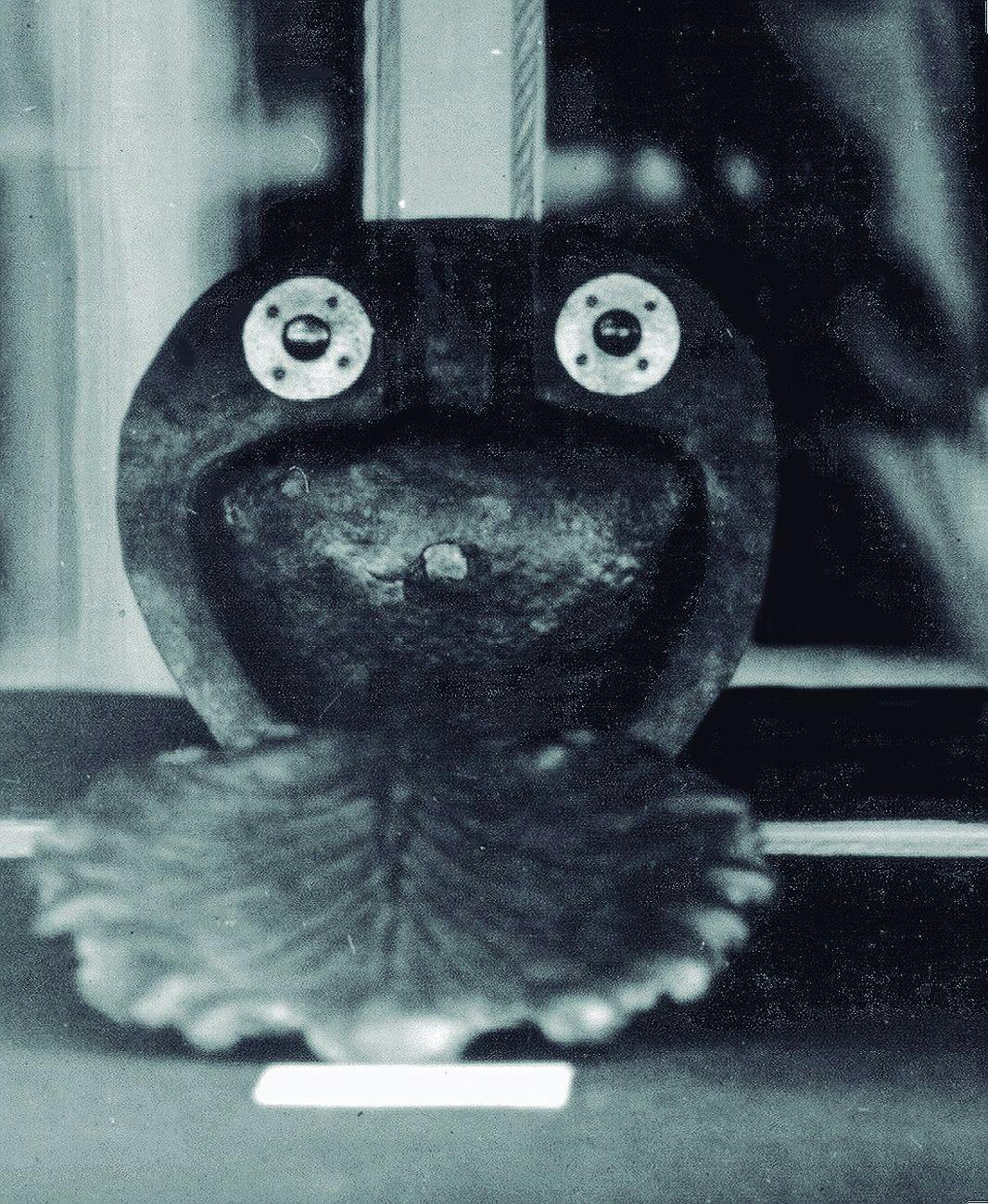
Fig. 19. Hammered metal ashtray made in the Escuela Nacional de Artes y Oficios, 1916. Exhibited at the Escuela Nacional de Artes y Oficios between February and March, 1917
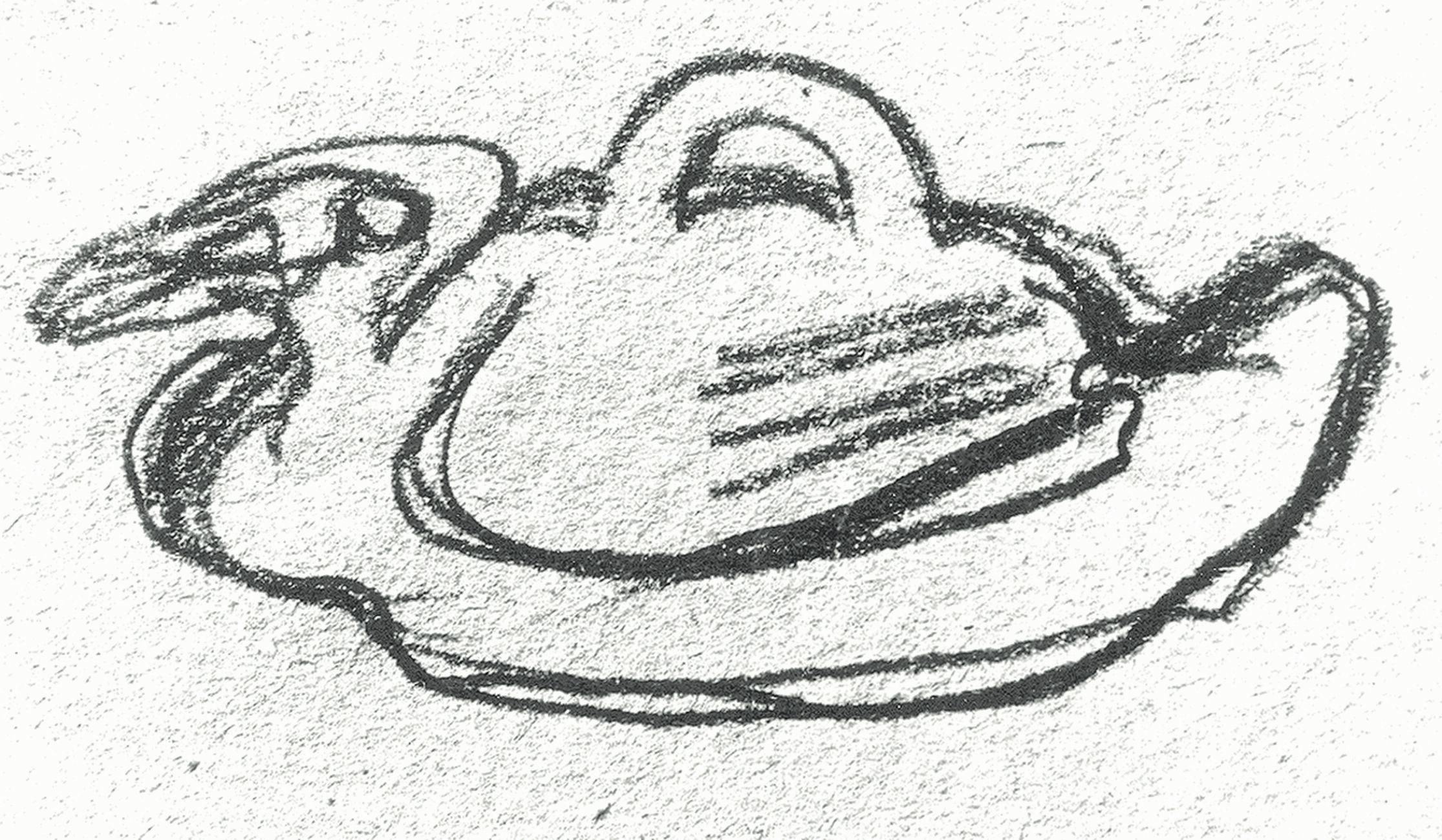
Fig. 20. Pedro Figari, Design for a bird-shaped ceramic compote made in the Escuela Nacional de Artes y Oficios. Graphite on paper
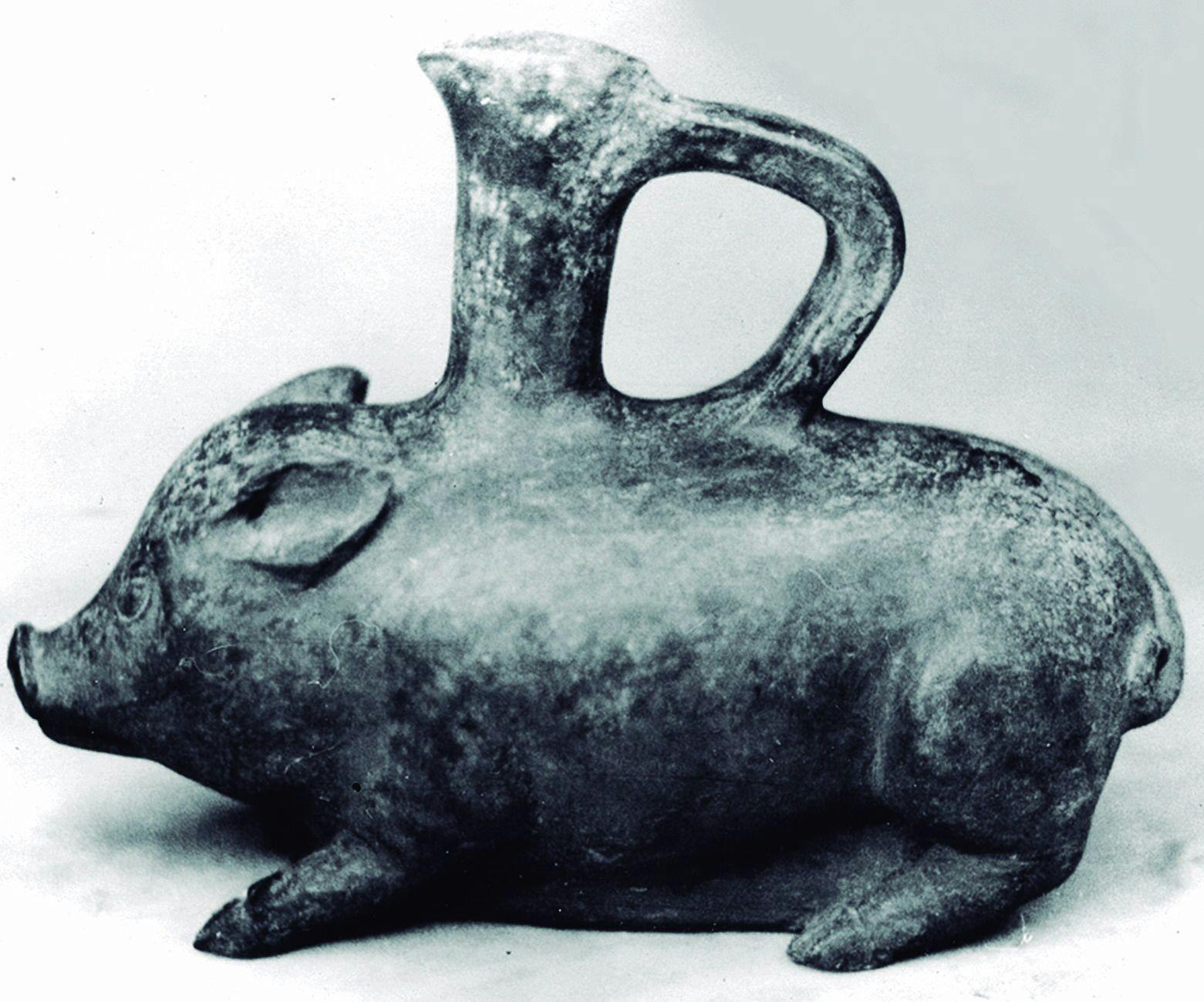
Fig. 21. Escuela Nacional de Artes y Oficios, 1916. Ceramic object in the shape of a pig, 9 7/16 × 5 ½ in. (24 × 14 cm)
As Figari himself said: “we must build and decorate with an autonomous criterion, capable not only of emancipating ourselves from foreign suggestions in everything that does not suit us, but also of understanding and magnifying its natural environment, as well as American traditions and relics.”
II.
For Figari, art education consists of creating individualized productive criteria, separate from the concept of beauty. In his doctrine there is no “good” and “bad” form, but rather bad or good production criteria depending on whether they imitate the European or seek regionalist resonances. Regionalizing production meant, then, using regional raw materials, technical procedures in accordance with the situation of the manufacturing industry, and craft forms linked to the archaic and popular traditions of the region. In this sense, Figari shared a great deal with the French thought founded by Paul Vidal de la Blache in his “human geography,” which took the regional as an object of study. For both thinkers, the regional landscape, both cultural and physical, resulted from the encounter between natural physical factors and anthropic factors. This is another point of contact between his pedagogy of the industrial arts oriented toward a visual-regionalist horizon and the concept of landscape and regional memory that he addresses in his pictorial production.
As mentioned earlier, it is worth noting the influence that John Ruskin and William Morris had on Figari as intellectual directors of the Arts and Crafts movement in the nineteenth century (Fig. 16–17): “Ruskin, a great cultivator of beauty, must have had a powerful influence on the artistic development of England. . . as it’s true that the movement there has taken a broad development in all its forms. . . In addition, in Germany there are more than two thousand industrial improvement courses, and there, in Europe, it is difficult to exclude art from any industrial manifestation.” 18
Moreover, in his considerations of the “artist-worker” as a model moral subject, beyond the aesthetic question and the problem of the machine, Figari seems to feel an affinity with the socializing humanism preached by Morris. However, in the furniture designs encouraged by Figari at the ENAO, there is a rustic simplicity that is far from the gothic and romantic tones of Arts and Crafts. In 1883 Morris had used the same arguments deployed by Figari in his report on the creation of a School of Fine Arts in 1903: art —Morris said— “[takes in] not only painting and sculpture and architecture but the shapes and colors of all household goods, nay, even the arrangement of the fields for tillage and pasture, the management of towns and of our highways of all kinds; in a word, to extend it to the aspect of the externals of our life.” 19
The idea that the school directed by Figari was a kind of antecedent of Bauhaus, founded in 1919 in Germany, is common. But a simple comparison between both experiences is enough to totally discard that idea. However, it is possible to find a shared aspect: the interest in reconciling the sphere of traditional art and crafts with the emerging field of industrial production.
The Bauhaus school emerged from an intense tradition of debates on industry, art, and architecture that began at the end of the nineteenth century and gained special impetus with the founding of the Deutscher Werkbund in 1907. Germany sought to produce an offer of industrial products capable of competing (mainly with England) in the international market. But in Uruguay such scale of problems was irrelevant, since its industrial infrastructure was almost non-existent. What was crucial, instead, was the visibility of the country not only as a producer of wool and meat but also as a producer of its own manufactured artifacts. This task required preparing local labor forces to industrialize local and regional raw materials with inventiveness.
Compared to the German case, Figari was closer to the old English tradition of Arts and Crafts and the Kunstgewerbe style of craftsmanship. Figari considered the manual procedures carried out in weaving, furniture, or blacksmith workshops as industrial procedures in themselves, even when unmediated by serial mechanical technology.
Without intending to delve into a critical reading of the objects made at the School in 1916, it is possible to take into account certain trends in that year’s production: 1) constructive simplicity; 2) practicality; 3) rational decoration; 4) figurative wit.
The constructive simplicity is not only due to the limited technical resources available but to a formal austerity of ideological matrix. This simplicity was accompanied, in many furniture and blacksmith pieces, by a deliberate exhibition of constructive assemblying resources that tended to be hidden. This sought to give moral value to the sincere display of rivets on iron objects, wedges, bolts, and hardware in rustic furniture (Fig. 18).
Practicality (inseparable from formal simplicity in this case) coincided with the functionality with which the different parts of the object paid tribute to its use conditions. In an article in the newspaper El Telégrafo, one of the pieces of furniture was described in the following terms: “It’s almost a mere drawer, a few chairs, it doesn’t take up any space in the room; but we open it and we have a table for five people; a very large sideboard, a bread bin below, a glass cabinet, a place to put a nice vase.” 20
However, Figari did not seem to find the essential arguments of a regionalist style only in simplicity or practical value. The main element was formal innovation, which included new decorative criteria. A large part of the metal and ceramic objects were the most representative of a regionalist and Americanist aspiration, based on their formal and expressive peculiarities. As Figari himself said: “We must build and decorate with an autonomous criterion, capable not only of emancipating ourselves from foreign suggestions in everything that does not suit us, but also of understanding and magnifying its natural environment, as well as American traditions and relics.” 21
These attempts at Americanist design searched for stylistic devices alien to those practiced in Europe in pre-Hispanic props. At the same time, they resorted to schematization and geometric simplification to approach the most outstanding conceptual patterns of European modernism.
In another newspaper article one can read: “The ingenuity also marks the materiality of the construction, and in the exhibition you can see comfortable furniture with new shapes that the known models lack.” 22
Figurative ingenuity was a concept that Figari was already working with in 1912. Figari expressly differentiated an “emotional” or “evocative” aestheticism from another “rational” or “inventive” aestheticism. Most of the objects made in the School presented this double condition: they were on the one hand “functional” and, on the other, carriers of a figurative representation. In ceramic and metal workshops, the recurrence of anthropomorphic and zoomorphic figures is significant (Figs. 19, 20, 21). In the functional study of the object lies a rational operation (required by the object’s effectiveness), and figuration is related to an operation of “evocation,” because the form refers to things that belong to the natural realm. Figari asked: “Why not start preparing our evocative grounding within the elements of our splendid natural environment?” 23
The goal of the industrial entrepreneurs in Uruguay was to formulate a teaching plan aimed at training intermediate and superior technical cadres for the industry. Also architecture, as a socially engaged discipline, claimed the need to have intermediate technical cadres at their service. None of these circumstances was addressed in Figari’s pedagogical model. His project was isolated and faced with a policy that, under the motto of reconciling work and capital, sought to train workers at the service of the business patronage. Figari’s resignation in March 1917 was followed, on April 14, by the assumption of the Higher Council for Industrial Education, composed mostly of strong businessmen from the Chamber of Industries. Figari’s project was replaced, from then on, by an education of a technical-industrial nature, and by courses in applied arts essentially viewed as “feminine tasks.” In this way, the feminization of decorative trades and the masculinization of the industrial proletariat were institutionalized. The teaching of painting and sculpture, as “higher arts,” remained in the hands of the Círculo de Bellas Artes.